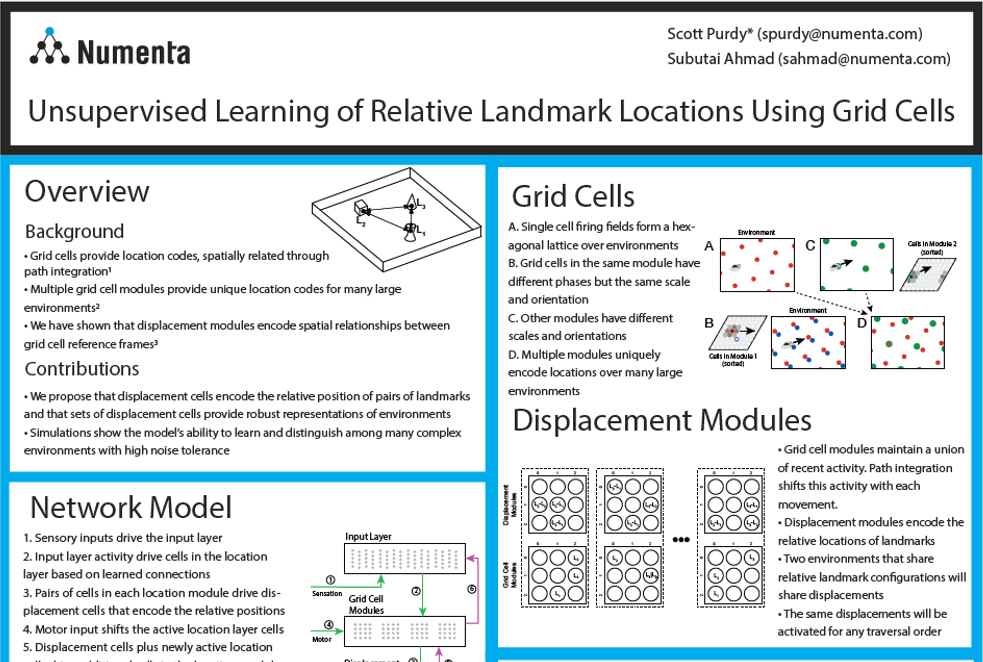This poster walks through a proposal of how the brain uses grid cells to perform unsupervised learning of landmark locations. It shows results of a network model trained on 1000 environments, each with 16 locations containing random landmarks from a pool of 5 unique landmarks. The network is able to distinguish between environments with substantial noise, while a bag-of-features model is not.
Background
- Grid cells provide location codes, spatially related through path integration
- Multiple grid cell modules provide unique location codes for many large environments
- We have shown that displacement modules encode spatial relationships between grid cell reference frames
Contributions
- We propose that displacement cells encode the relative position of pairs of landmarks and that sets of displacement cells provide robust representations of environments
- Simulations show the model’s ability to learn and distinguish among many complex environments with high noise tolerance

